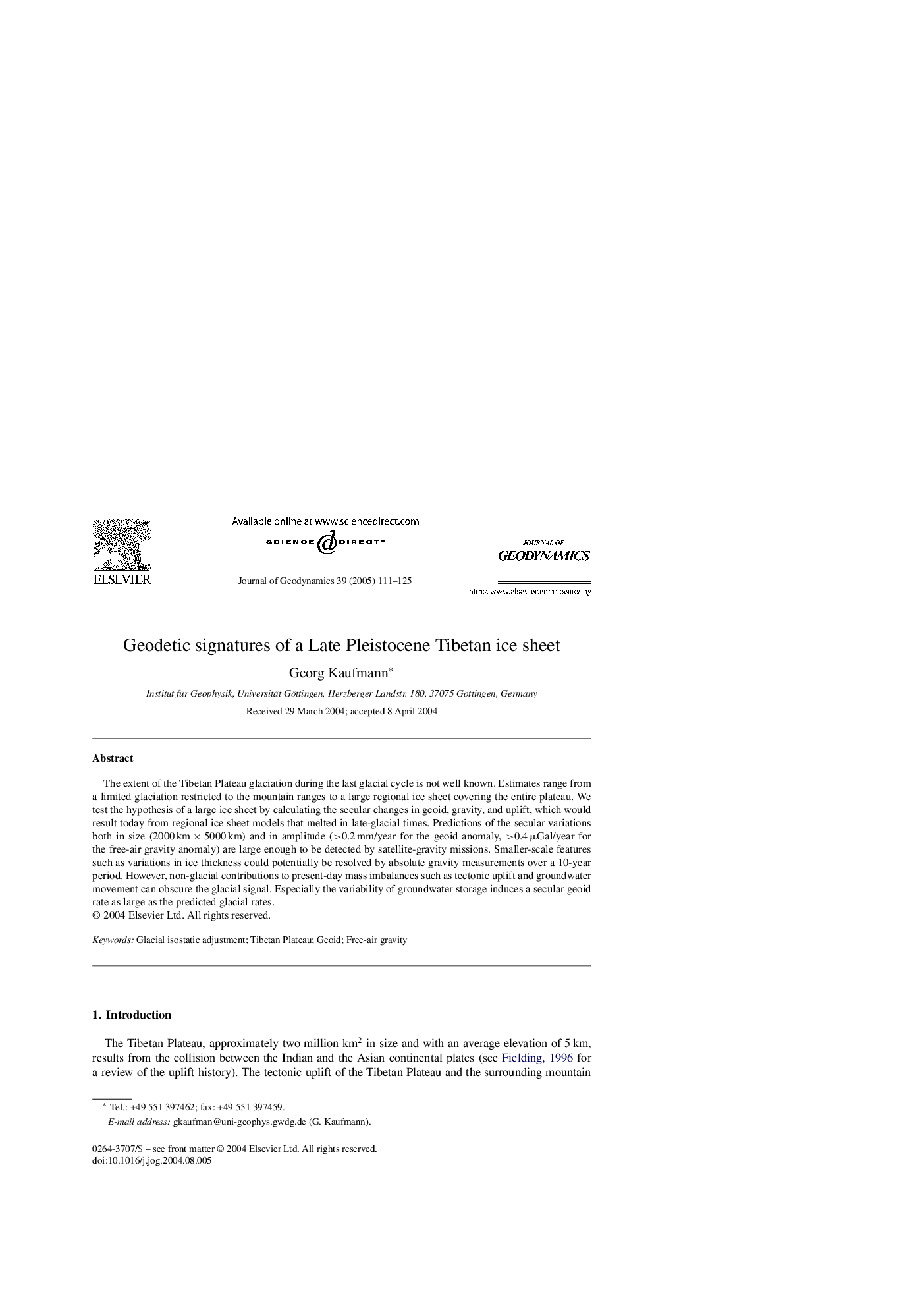| Article ID | Journal | Published Year | Pages | File Type |
|---|---|---|---|---|
| 9525704 | Journal of Geodynamics | 2005 | 15 Pages |
Abstract
The extent of the Tibetan Plateau glaciation during the last glacial cycle is not well known. Estimates range from a limited glaciation restricted to the mountain ranges to a large regional ice sheet covering the entire plateau. We test the hypothesis of a large ice sheet by calculating the secular changes in geoid, gravity, and uplift, which would result today from regional ice sheet models that melted in late-glacial times. Predictions of the secular variations both in size (2000kmÃ5000âkm) and in amplitude (> 0.2âmm/year for the geoid anomaly, > 0.4âμ Gal/year for the free-air gravity anomaly) are large enough to be detected by satellite-gravity missions. Smaller-scale features such as variations in ice thickness could potentially be resolved by absolute gravity measurements over a 10-year period. However, non-glacial contributions to present-day mass imbalances such as tectonic uplift and groundwater movement can obscure the glacial signal. Especially the variability of groundwater storage induces a secular geoid rate as large as the predicted glacial rates.
Related Topics
Physical Sciences and Engineering
Earth and Planetary Sciences
Earth-Surface Processes
Authors
Georg Kaufmann,
